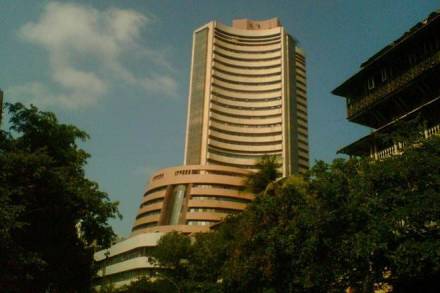Indian stocks tumbled nearly 430 points on Tuesday, falling for the fifth straight session led by some big selling in banking stocks. The Sensex has lost 1,128.55 points and Rs 4.3 lakh crore of market capitalisation in the last five sessions. Although Asian markets posted gains, ostensibly shrugging off worries about a global trade war, Indian equities had a rough day with investors remaining concerned about the impact on banks of the fraud at Punjab National Bank (PNB).
A Bloomberg report in the afternoon on the possibility of Europe imposing a 25% tariff on $2.8 billion worth of American goods triggered some late selling and saw the Sensex and Nifty shed 1.27% and 1.06%, respectively. Since January 29, when it hit its recent peak of 11,171.55 points, the Nifty has yielded as much as 8.55%. Since February 1, when the Union Budget for 2018-19 was announced, the Sensex has given up some 7%.
After pumping in close to $8 billion in 2017, foreign portfolio investors are lying low and have so far invested only a meagre $309 million in Indian equities in 2018; they have been selling regularly since January 23. Domestic institutions, on the other hand, have been net buyers of equities worth $2.6 billion this year.
Banking stocks were beaten down on Tuesday, explaining the sharper fall in the Sensex vis-a-vis the Nifty, as financial sector stocks account for 40% of its weightage. The Bank Nifty index was down 1.5%, while the BSE Bankex shed 1.44% after the Serious Fraud Investigations Office summoned the heads of all lenders to Nirav Modi and Mehul Choksi group entities, for further information on the defaulting entities and their mechanics.
Market insiders don’t rule out more skeletons falling out of the banks’ cupboards and this concern seems to have rattled investors.
Earlier in the day, Asian markets had shrugged off the protectionist stance adopted by US President Donald Trump on imports of commodities like aluminium and steel. Most Asian indices ended with strong gains after the sell-off on Monday. The Hang Seng closed 2.1% stronger, while the Nikkei and Kospi ended 1.8% and 1.5% up.
Indian equities had returned 28.75% in rupee terms and 37% in dollar terms in calendar 2017 but have seen a sharp reversal in trend in 2018. The Nifty has registered a decline of 2.1% since the start of the year to close at its lowest level so far in 2018 at 10,215.91. This has translated into poor returns on a year-to-date basis for Indian equities vis-a-vis other prominent global markets, as measured by returns on their benchmark indices. In fact, with a negative return of 4.3%, India finds itself at the bottom of the table, in good measure also due to a 1.7% decline in the value of the rupee against the dollar. Brazil has been the best performing market on a year-to-date basis this year with dollar returns of 15%, aided by a 2% gain in its currency against the dollar.
Despite the skittish sentiment in the market, though, analysts aren’t too perturbed. ICICI Securities wrote: “Based on various factors, our earlier analysis concluded that the fear factor is not extreme currently and is showing signs of receding.” The brokerage said it remains overweight on domestic cyclical recovery and wary of global trade environment and capital flows and added it would be fearful of a capitulation if growth outlook were to weaken in a rising inflation and deteriorating fiscal environment.
On Tuesday, when Indian equities lost about Rs 1.75 lakh crore in market capitalisation, the big losers were state run lenders Canara Bank (-5.1%), PNB (-3.15%), private banks like ICICI Bank (-2.84%) and Axis Bank (-2.3%). Sun Pharma also ended 3% down, despite hopes its issues with the US food and Drug Administration may finally get resolved.
A big fall was seen in the stock of Adani Enterprises, which lost 7.5% after a member of the ruling alliance alluded to its bank exposure running into thousands of crores turning into non-performing assets. The company issued a statement later in the day to counter these allegations.
Fears of higher inflation and liquidity are reflected in the 10-year bond yields firming up by 174 basis points since the start of the year.
